The ultimate guide to shipping your van from the UK to the USA – everything you need to know
This article will cover everything you need to know about shipping your van from the UK to North America (i.e. Canada or the US). We’ll go into detail on the different shipping options, exactly how much it costs, and the shipping process. We’ll also cover everything else you need to consider for your trip, from insurance to visas.
We personally shipped our campervan Ringo from Liverpool in the UK to Halifax in Canada. So, we have first hand experience shipping our van. Everything in this article is based on our first hand experience in March 2023.
Read on to find out exactly what you need to know about shipping your UK van to America.
Shipping your UK van to North America
There are a couple of decisions you need to make when shipping your van across the pond. Firstly, there’s how you will ship your van – via RoRo (Roll on Roll off), or in a container. Secondly, you will need to decide where to ship your van from and to – the USA or Canada. We’ve provided more information about each option below, so you can decide what’s best for you.
Container shipping
If possible, shipping your campervan or overlander in a container is the ideal method of shipping a vehicle. It’s the safest option, as your van will be locked away inside a container. This means that you can ship it with all of your belongings inside.
However, container shipping is more expensive than RoRo shipping. Additionally, this is only an option for you if your vehicle will fit inside a container. Below are the dimensions of standard containers:
For us, the additions of an awning and skylights made the overall height of the van almost identical to that of the opening of a 40ft high cube, and even with deflating our tyres we felt it was asking for trouble. A standard 20ft or 40ft container only has an opening of 2.27m. So, if you have a standard high top van (around 2.6m without any thing mounted on the roof), then you simply won’t fit in a standard container. 40ft high cube containers are slightly bigger, with an opening of 2.58m.
However, any high top vans with roof mounted accessories – awnings, solar panels, skylights etc. – will need to double check if they think they will fit. If you have a smaller van, such as a VW Transporter, or maybe you have an overlander Defender, then this could be a great option.
IVSS offer a container share service, where they will try and match you to another person shipping their van on the same route as you. This will allow you to split the cost of a container, which makes container shipping similar or even cheaper than RoRo shipping. If you’re able to do this, it’s definitely the best option.
RoRo shipping
For those who can’t fit in a container, or who are on more of a budget, RoRo shipping is the go to. RoRo stands for ‘Roll on Roll off’ shipping, much like if you were to take a ferry across the Channel to France. Your vehicle is simply driven onto the boat and parked alongside others, and then driven off at the other end. You will be charged based on the size of your vehicle, so if you have a smaller van, it won’t cost as much as if you have a larger campervan.
Is RoRo shipping safe?
The important thing to note about RoRo shipping is the high theft rates. When you ship your van using RoRo, shipping agents generally recommend that you ship your van completely empty. This is because RoRo shipping is inherently more risky. If you ship your van in a container, it is locked away until it reaches its destination. On the other hand, when you ship your van RoRo, its easily accessible the entire time it’s on the ship. Plus, the staff have the keys to your van. So, if you don’t have a bulkhead and deadlocks, it’s very easy for the boat staff to get inside your van and steal your belongings.
IVSS shared the following statistics on theft rates of certain shipping routes:
- EU to Mexico – 1/6
- EU to Mexico (via Kingston, Jamaica) – 1/3
- EU to USA and Canada (from Zee / Southampton / BREM) – 1/50
- EU to USA and Canada (from Antwerp / Liverpool / Hamburg) – 1/10
Because of this, there are a couple of steps you can take to ensure the safety of your vehicle. Firstly, we would recommend you install a bulkhead in your campervan. Even if you don’t usually have a bulkhead, you can add a temporary bulkhead for the shipping process. Secondly, add deadlocks to the doors of your van. This means that unless someone has the deadlock keys, they can’t get into the back of your van. These 2 steps will ensure that even if someone has the keys to drive your vehicle, they can’t get into the back.

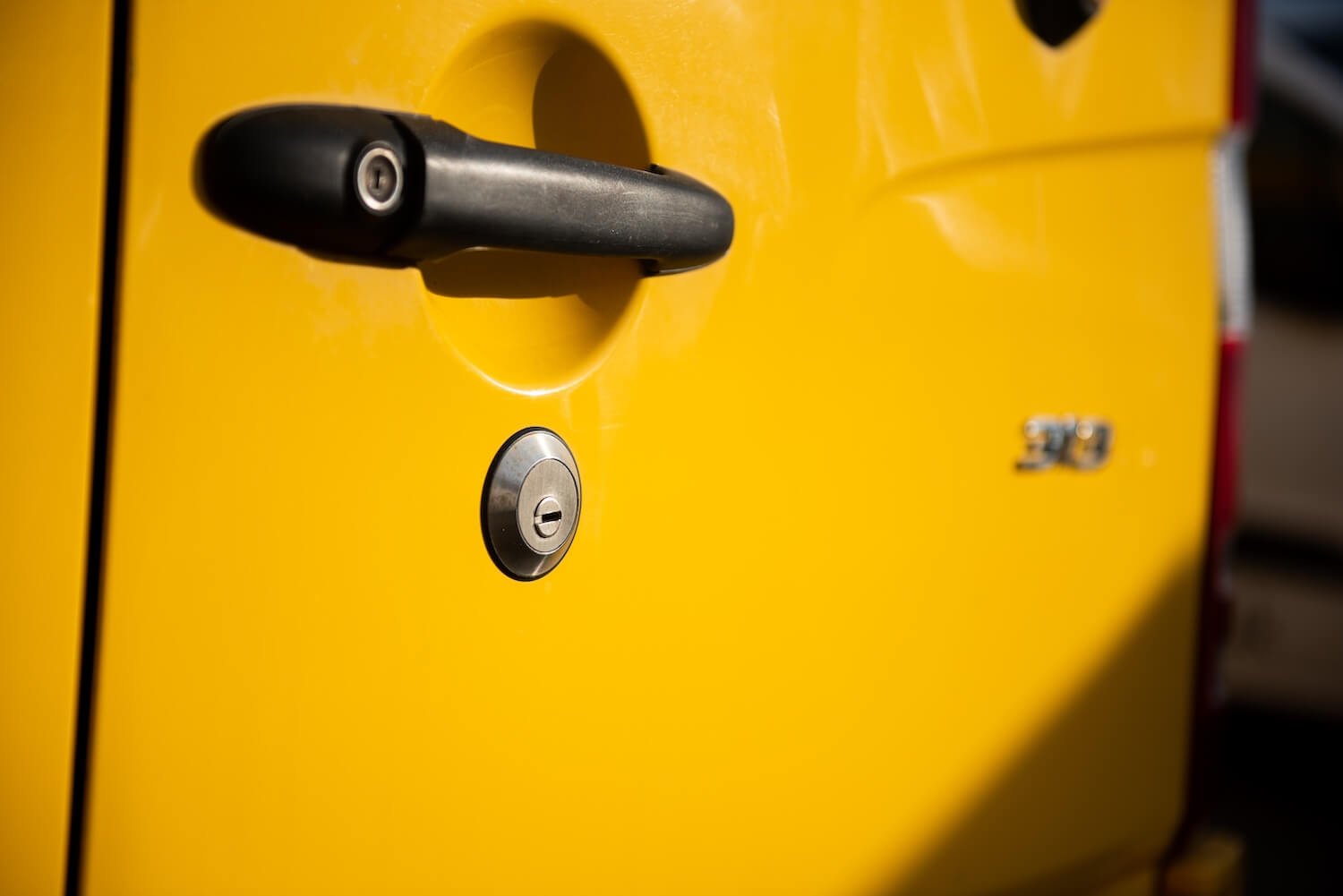
In the case that customs need to check in the back of your van, it’s important they have a method of access. So, most people will fit a key safe in the cab which contains the deadlock key. This means that if you receive a phone call from your shipping agent that customs need access, you can simply give them the code to the key safe.
This is the safest option for shipping your van using a RoRo service. We have heard a lot of horror stories about RoRo shipping, but most of these seem to come from people who have easy access from the cab to the back of the van. We can only talk from personal experience, but we didn’t have any issues shipping our van from the UK to Canada using RoRo, with a bulkhead and deadlocks.
It’s important to note – any insurance provided during the shipping process will not cover theft of any of your belongings. For this reason, shipping agents recommend you ship your vehicle completely empty. It’s up to you whether you decide to ship your belongings in your van. If you do, you should take all of the safety precautions possible.
Map of port connections to / from EU and North America. IVSSUK
Shipping your UK van to the USA
If you’re planning a US road trip, you might think it makes most sense to ship your van to America. However, there are some differences between shipping to the USA vs Canada that it’s worth being aware of.
The US has specific rules about the vehicles which can and cannot be imported into the country. These are laid out by the EPA (Environmental Protection Agency). However, if you are only importing your vehicle temporarily (i.e. less than 12 months), then you can get an EPA Exemption.
To request a Nonresident Temporary Importation Approval Letter from EPA, you need to provide a number of details to EPA via email. After 3-6 weeks, they will provide the approval letter. Due to the waiting period, you need to obtain the letter prior to shipping your vehicle.
You will need to supply:
- Your full name, current foreign address, phone number, fax number, and email address (if applicable).
- Your U.S. address, phone number, fax number, and email address (if applicable).
- Vehicle year, make, model and Vehicle Identification Number.
- A statement explaining the reason for your visit to the United States. (Work/school/vacation).
- The date of the importation.
- Location of the vehicle and the Nonresident at the time of request.
- The duration of the importation.
You can find the official instructions for applying for the EPA Approval Letter on the US EPA website.
If you don’t obtain the required EPA letter, it’s very likely you will have issues entering the US.
Shipping your UK van to Canada
In comparison, it is much easier to ship your van to Canada. As long as it is a temporary import (less than 12 months), there is no additional paperwork required. Additionally, the shipping route to Halifax is one of the most popular in the world. So, there are many more shipping dates to pick from. Additionally, IVSS recommended that we ship to Halifax because it is the most common shipping route. So for this reason, we decided to ship our van to Halifax and drive into the US.
UK to North America shipping routes and costs
The most common shipping routes from the UK to America are from Southampton and Liverpool to New York, Baltimore and Brunswick on the East Coast, and Long Beach, Tacoma and Port Hueneme on the West Coast. For Canada, the most common shipping route is to Halifax, Nova Scotia on the East Coast.
The table below shows the time and cost to ship between each of the major ports, as of April 2023. For an exact cost at the time of shipping, you should contact a shipping agent directly.
| Starting port | Disembark port | Sailing time | Total cost (RoRo)* | Total cost (20ft) | Total cost (40ft HC) |
|---|---|---|---|---|---|
| UK (Southampton, Liverpool) | East Coast US (New York, Baltimore, Maryland) | 9-13 days | ~£3,000 | ~£4,500 | ~£6,500 |
| UK (Southampton, Liverpool) | West Coast US (Tacoma, Long Beach, Port Hueneme) | 29-36 days | ~£4,500 | £5,500 | £8,500 |
| UK (Southampton, Liverpool) | East Coast Canada (Halifax) | 6-8 days | ~£3,500 | ~£4,500 | ~£6,000 |
As you can see, the cost of container shipping is much higher than RoRo shipping. However, if you’re able to share the container with someone (and you can fit in the first place!), depending on the container size the cost is either parity or even cheaper. Plus, it’s definitely the safer option.
Please note: Southampton sailings are only available at certain points in the year. We shipped our van to Halifax in March/April 2023, and there were no Southampton sailings available.
Shipping agents
There are a number of different shipping agents you can use to ship your van to North America. Shipping agents are very useful, as they know the process at each different port, including customs clearance. Additionally, they can provide insurance if your vehicle is damaged. We would strongly recommend using a shipping agent to make your life easier.
We used IVSS UK, who are hands down the most knowledgeable company when it comes to shipping your van. They will regularly share information and updates on various Facebook groups, and are very happy to answer any questions you have about the shipping process.
The shipping process timeline
It can be confusing understanding exactly what happens when, so we thought we’d share a timeline of the shipping process.
2-3 months before ship departure
It’s not possible to book your ship more than 2-3 months before travel. We’d recommend reaching out before this to get a quote, and then following up with the shipping agent 2-3 months before you plan to travel to get booked onto a specific shipment.
As soon as we had booked our shipping, we booked our flights. It’s hard to know when is best to do this, because if your boat is delayed you will need to move your flights. It’s very common for ships to be delayed by several days or even weeks – [stats on delayed ships] – so it’s hard to know whether you should book flights now or not. However, booking last minute flights can be very expensive. We decided to book flights once the shipping was booked, but it’s very important to purchase flexible tickets.
These usually mean that in the case of a change, you just pay the difference in cost between the tickets. Doing this last minute will end up quite expensive, but it does ensure that you don’t also have to pay a fee to change your ticket, or that you’re not able to change your ticket.
We also booked an Airbnb for a few days in Halifax at this point. Once again, it’s important you book something with flexibility in case of any delays.
IVSS recommend you should expect your shipment to be delayed by 2 to 3 weeks. So, this gives you an idea of the likelihood of this happening!
2-4 weeks before ship departure
At this point, we’d recommend monitoring your ship. You can monitor sailing schedules on the shipping website. For the Liverpool to Halifax shipping, this is the Marine Traffic website. If your ship is delayed, contact your shipping agent to find out any updates they may have.
It's possible to track individual ships through Marine Traffic
10 days before ship departure
You will be given a window in which you can drop your van at the port. Once there’s 10 days to go from the shipping date, if the boat has not been delayed, this should be fairly set. Double check with your shipping agent, but at this point you should be safe to book any transport back from the port.
3-7 days before ship departure
There is usually a 4 day window in which you can drop your van the port. The cut off for this is 3 days before the ship is due to leave. You will need to do a few jobs before you can drop your van at the port.
Most carriers will require you ship your van with an empty LPG tank. We were advised that our gas tank would need to be fully empty at least one week prior to delivery, and the tank ‘has no pressure, no residual gases, and the valve should be left open’. In reality, it’s very hard to do this with an underslung gas tank. We just ensured it was as low as possible, and this didn’t present any issues.
When you ship to the US and Canada, it’s very important that your vehicle is clean and free of any dirt. This is a very strict rule, and you can be charged high additional fees if additional cleaning is required. To ensure our van was clean, we took it to a car wash just before dropping it at the port.
Our shipping agent provided us with a couple of documents to print off and take to the port. One of these was a ‘sticker’ which was sellotaped to the van, and the other was a ‘shipping note’. You have to print these out as they will not accept a digital copy on your phone. You will also need a high vis jacket to wear at the port.
Once at the port, you need to present the shipping note and complete a couple of forms. Then, we just had to drop the van off in a designated area and leave the key with an official. It’s not possible to walk around the ports, so they arranged for a transfer to take us to the port entrance, where we took a taxi back to the train station.


IMPORTANT: Most ports will leave the key of the van in the ignition. This is so that keys don’t get mixed up / lost, and in case of an emergency, e.g. fire, they can easily move the vehicles. Our van is an ex-courier van that has an auto-lock feature – this means that as soon as you shut the door of the van, it locks automatically. We therefore weren’t able to leave our key in the ignition, which caused quite a lot of last minute stress and panic!
We ended up leaving the window rolled down, and we were very lucky that it didn’t rain in the days it was at the port waiting to be loaded onto the boat. We would strongly encourage anyone with auto-locking doors to get this feature removed before shipping your van.
Ship arrival day
Once the ship reaches its destination port, you will need to wait for it to be unloaded and examined by customs. Because we were obsessively checking the tracker for our boat, we actually got to see it go past as it reached Halifax!

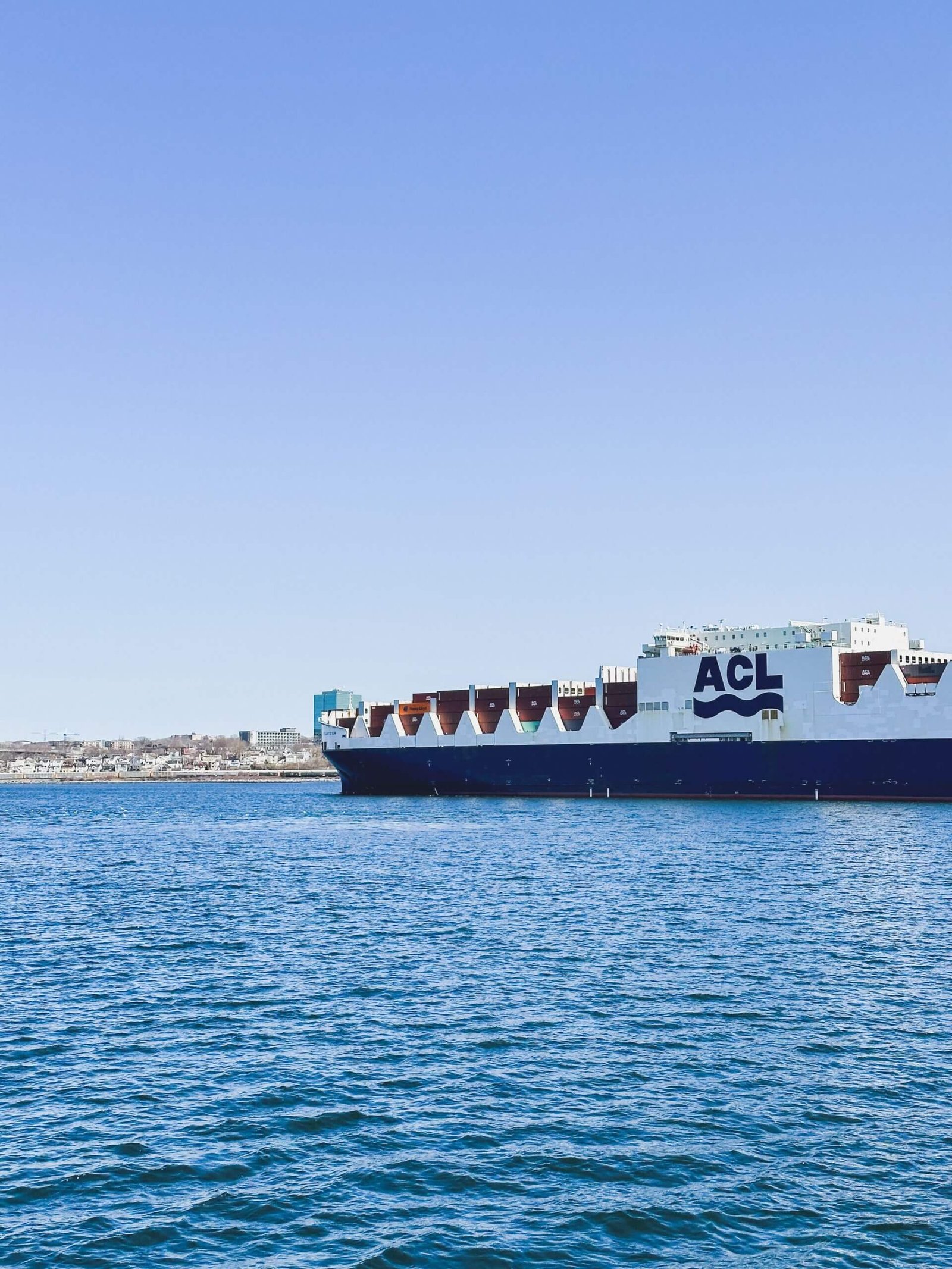
2-4 days after ship arrival
Depending on when your van arrives, unloading and examining can take anywhere from 2-4 days. It’s usually 1-2 working days after the boat’s arrival.
If you’re shipping your van to Halifax, you will need to go to the customs office at 263 Susie Lake Crescent, B3S 0J5. You will need a printed copy of your arrival notice and delivery order, which they will sign and stamp.
Once you have these, you can then call the port to schedule the pickup. Usually they will need at least 24 hours notice.
The customs building in Halifax is a 20 minute drive from the city centre
3-5 days after ship arrival
Now all that’s left is to go and pick up your vehicle! We got a taxi to the port (Terminal 6708 Bayne Street), and we then had to provide the stamped arrival notice and delivery order.
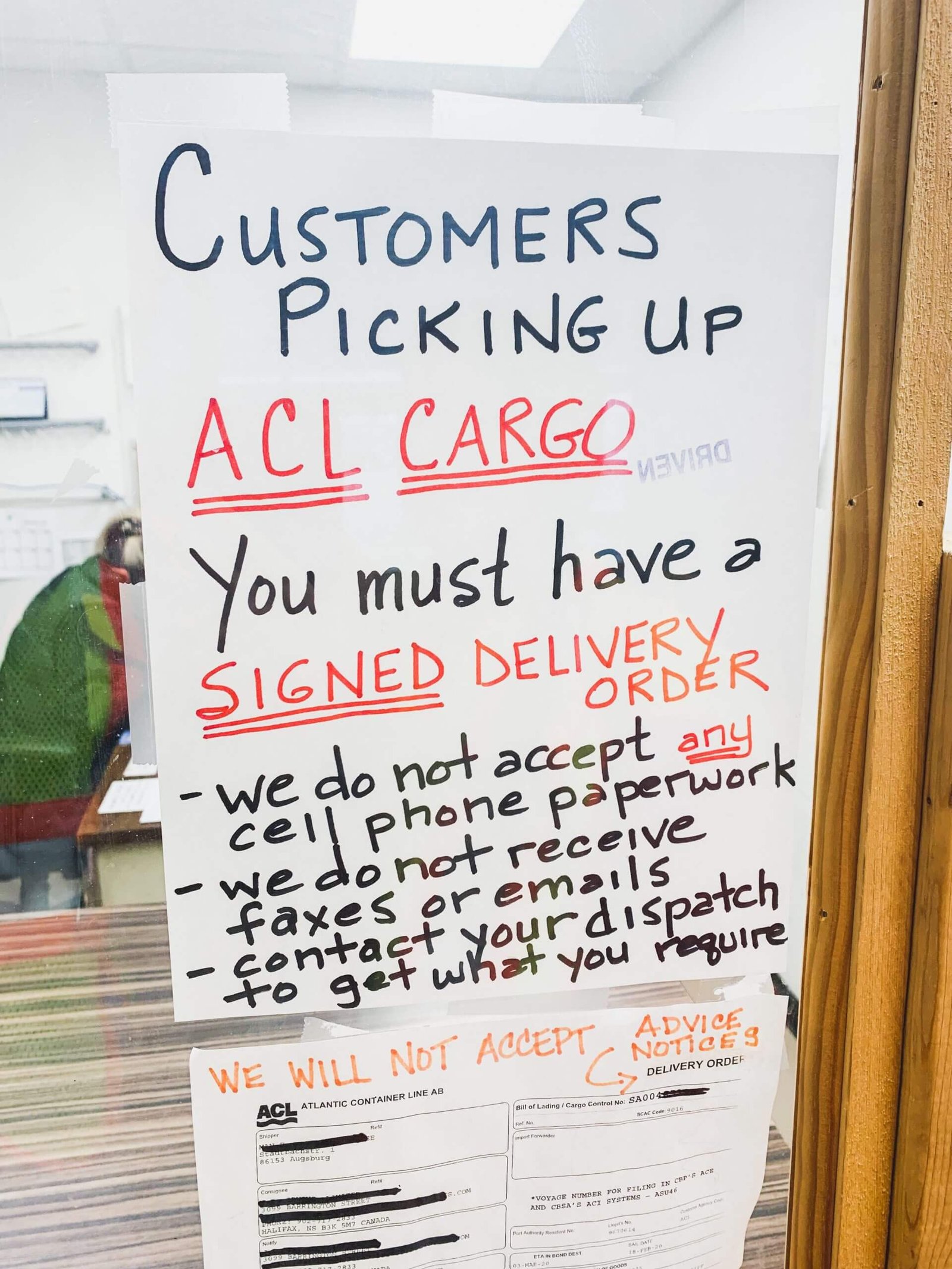
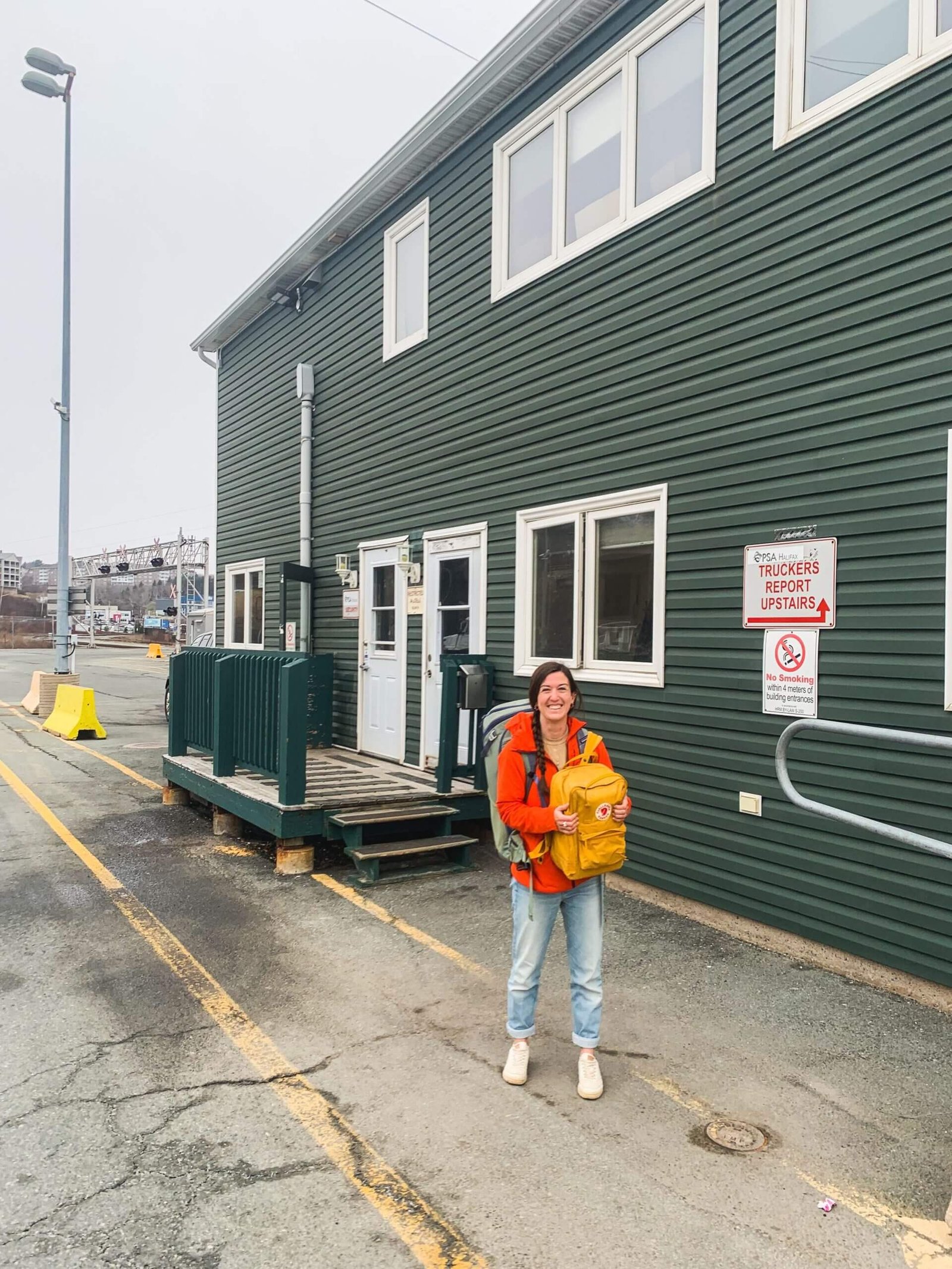
There is a small fee to pay at the port, and you will then be able to collect your vehicle. You should ensure you check it for any damage, because this needs to be reported immediately.
Once you’ve done this, you’re ready to start your adventure!
Exactly how much it cost us to ship our van from the UK to Canada
We thought it would be useful to provide an exact breakdown of costs. These costs are based on:
- RoRo shipping from Liverpool to Halifax in April 2023
- LWB Mercedes Sprinter (7m long, 2.2m wide, 2.8m high, 3.5t)
| Breakdown | Cost |
|---|---|
| Shipping cost | $3,418 USD (£2,734.98) |
| ISPS (International Ship and Port Facility Security) Fee | £50 |
| BL (Bill of Lading) Fee | £50 |
| Customs & THC (Terminal Handling Charges) | £210 |
| Marine Cargo Insurance | £285.71 |
| Soil inspection fee | $75 USD (£60) |
| Documentation & Handling fee | $75 USD (£60) |
| Tailgating, Demurrage & THC fees | $99.93 CAD (£60.20) |
| TOTAL | £3,510.89 |
What’s cheaper, shipping your campervan or renting an RV?
So, as you can see, it’s not cheap to ship your campervan to North America. Assuming you will also ship it back again, the total cost is around £7,000. But what’s the alternative?
Instead, you could rent an RV in North America for your road trip. We’ve worked out the cost difference of these two options below.
We looked on Outdoorsy, who describe themselves as the “number 1 RV rental website”. The cheapest campervan we could find similar to our own, a 2018 Dodge Sprinter, was $125/night. For rentals over 30 days, Outdoorsy offer 15% off the nightly rate.
Outdoorsy has a wide selection of RVs to pick from if you want to rent a van in the US
So, for a 6 month road trip, the total cost would be:
$125/night x 30 days x 6 months = $22,500
$22,500 – 15% discount ($22,500 x 0.15) = $19,125 = ~£15,000 total for 6 months
Therefore, the cost of renting an RV for 6 months is twice as much as shipping your van. We are planning a year long road trip, down through Central and South America, which makes the cost of shipping even more reasonable. Additionally, it would be very hard to find a company who would rent you a van and allow you to drive it across multiple continents.
When we work out the cost of shipping our van to America for a 12 month road trip, it comes out at only £583.33 per month between the two of us.
Between the two of us, we used to spend around £1,000 per month on rent in Bristol. So, as our campervan Ringo is also our home, it works out much cheaper to ship our van to the US for a road trip than it does to pay rent in a city in the UK!
Driving from Canada into the USA with a UK vehicle
We just wanted to add a short section on driving into the US from Canada, because we were worried it might be stressful or complicated. In reality, it was really easy, and didn’t take long at all. Ironically, we drove through the border into Maine in a town called Calais!
There were only a couple of other cars at the crossing, so it didn’t take long for us to reach the front. The lady in the booth asked for our passports, and then asked us to park the van and come inside the border building. They asked us a couple of questions (did we have any citrus fruits or firearms!), and then we had to pay a small fee, around $25 USD (~£20) each. The whole process took less than 30 minutes, and they didn’t search the van at all.
Once again, this is just our personal experience, so it may be different for you, depending where you cross. However, we would generally say that the crossing seems to be very simple, and there’s nothing to worry about when doing this.
What do you need to ship your van to North America?
There are a few important areas you’ll need to cover to ensure you have everything to ship your van to the States. We’ve covered everything you need to think of below.
V5C
Your V5C, or vehicle log book, is required by customs to check you are the official owner of the vehicle. So, you will need to ensure you take this with you when you fly to North America. We’d also recommend making several high quality colour photocopies and storing them in different places, just in case.
International drivers permit
You can purchase an international drivers permit from the Post Office for £5.50 per person. You will simply need to take your existing drivers licence, and fill out a form specific to the country you will be travelling in. There is mixed information online about whether or not it’s actually required to have an international driver licence if you have an English language licence. However, some insurance companies require them to quote, and the cost is low, so we’d recommend getting one just in case.
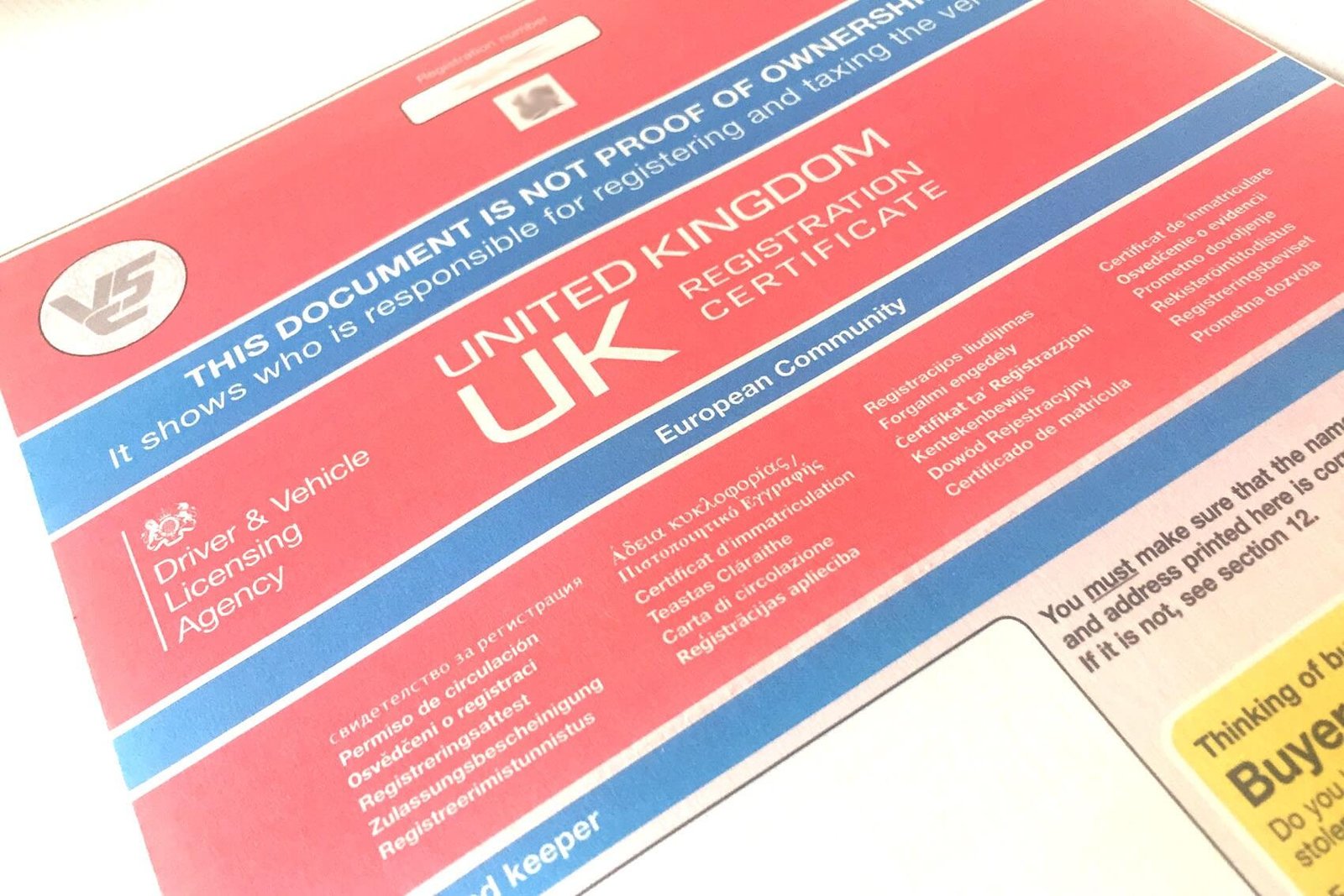
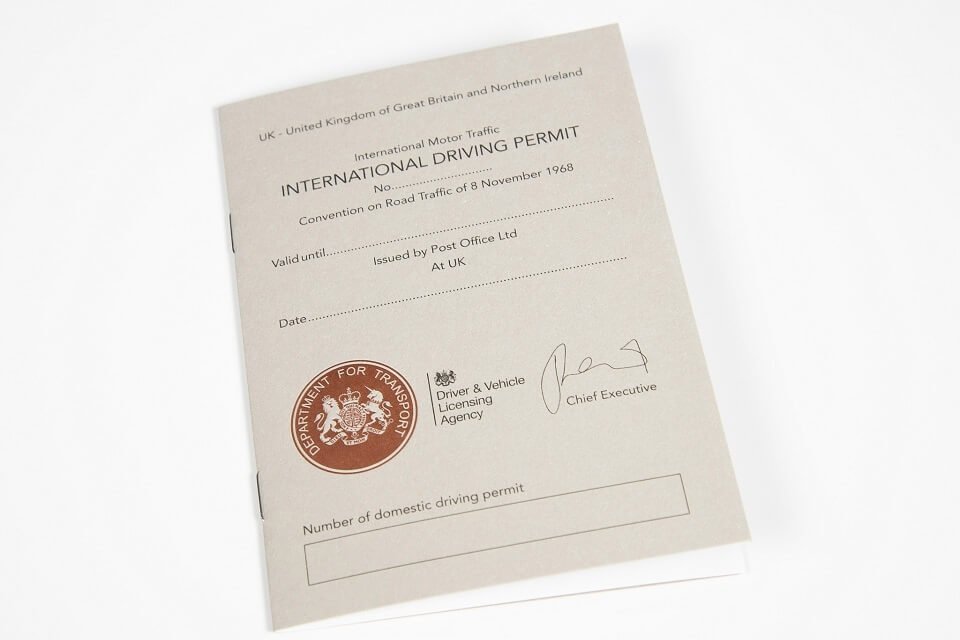
Two other important requirements for your trip are insurance and a visa! We go into more detail on these topics next.
Insurance
Vehicle insurance
Once your van is on the other side of the pond, you will need different vehicle insurance. There are supposedly a couple of providers who can offer insurance to foreign drivers driving non-native vehicles. We were advised by a couple of people that Progressive were the cheapest option. However, when we spoke to them on the phone, they advised that you need to have an additional vehicle as well as your campervan in order to be insured. I.e. they expect you to have a car in addition to your campervan for ‘day to day driving’ – which no one is going to have. So, we can’t see that it’s possible to insure with Progressive if you’re doing this sort of trip.
After contacting a couple of companies, we found that Thum Insurance had the most comprehensive and suitable coverage. Unlike other providers, they didn’t require you to have an address in the US or Canada. They required us to supply the following information:
- Photos of your vehicle (2 interior, 2 exterior) – required to quote
- Copy of your National and International Drivers Licences – (these are required to bind coverage)
- Summary of your planned route – required to bind coverage
- Estimated Mileage – required to bind coverage
Thum Insurance covered us for the following:
- Bodily Injury/Property Damage Liability – $500,000 USD
- Uninsured Motorist Bodily Injury Liability – $500,000 USD
- Underinsured Motorists Bodily Injury Liability – $500,000 USD
- Towing – Included
Their cover is for the US and Canada, however it’s possible to pay extra to be covered in Mexico. As of April 2023, 6 months cover costs $1,573.89 USD (~£1,250), or 12 months cover costs $2,829.25 USD (~£2,250). This also includes a basic level of breakdown cover.
Travel insurance
When travelling in North America, travel insurance is very important, especially due to the cost of healthcare in the case of falling ill or an accident. As climbers, it was important we found travel insurance which would cover all of our climbing, as well as typical travel insurance requirements. We found that many travel insurance companies won’t cover you for a trip as long as 12 months, or those that do weren’t able to cover outdoor climbing.
We eventually found TrueTraveller who have a number of different options, depending on your requirements. They offer cover for months long trips, with a number of add ons depending on what you require. As of April 2023, the cost for 12 months is ~£400 per person for the basic level of cover, which includes:
- Medical expenses – £10 mil
- Cancellation – £1,000
- Personal liability – £1 mil
It’s possible to go for a higher level of cover which costs ~£600 which has a higher cancellation cover of £7,500. As everything has to be booked relatively last minute for shipping your van, we decided to purchase travel insurance once everything else was booked and the chance of cancellation was very low.
We added the ‘Adventure Pack’ add-on which was an additional ~£130 per person and covers most types of outdoor climbing. There are also other add-on options, such as baggage, travel disruption, riding a scooter, etc. We decided to add baggage / valuables through a separate policy, as there are often very low limits on individual items through travel insurance policies.
So, the total cost for the two of us for 12 months was around £1,100.
Valuables & baggage insurance
We found the best source of valuables and general ‘contents’ insurance for our van was through a home insurance ‘contents only’ policy. This insures items that would typically be found in your house, but with a small added fee for coverage outside the home. We used John Lewis Home and paid ~£140 for the year. This covers:
- All of our clothing & jewellery
- All of our ‘sports equipment’ (all climbing & hiking gear)
- Both of our laptops
- Other low value electronics (headphones, speakers, etc.)
We have a separate policy for all of our camera gear, as this is specialist equipment.
Applying for a visa to the US and/or Canada
If you’re planning a trip across the pond, you’ll need to ensure you apply for the correct visa. If you will only be spending up to 3 months in Canada, and 3 months in the US, the process is much simpler. However, if you will spend up to 6 months in each country, you will need to apply for a tourist visa.
3 months or less – ESTA / eTA
Both the US and Canada have a very similar process for trips of 3 months or less.
USA – ESTA
You can quickly and easily apply online for an ESTA (electronic system for travel authorisation) for the US. They recommend you apply at least 72 hours before you travel. The cost of an ESTA is $21 USD (~£17) per person. When you apply, you will need to provide some basic information about yourself and your trip.
Canada – eTA
The Canadian eTA (electronic travel authorisation) is similarly easy to apply for online. Just answer a number of basic questions about yourself and pay $7 CAD (£4) per person. When we applied for our eTA, it came through instantly via email. However, we’d recommend that you apply at least a few days before you travel in case of any issues.
3-6 months – B2 tourist visa / visitor visa
Both the US and Canada have tourism visas which allow you to stay for up to 6 months. We’ve detailed the requirements for these, and the process of applying for them below.
US – B2 tourist visa
In the United States, the B-2 tourism visa is a visa which allows you to visit for up to 6 months. Not only that, but once granted, you can spend up to 6 months in any one year period in the US for the next 10 years. So, you won’t need to apply for this visa again if you want to do another long trip in the States. The US B-2 visa costs $160 USD (~£130) per person.
There are a number of requirements you need to meet to apply for the B2 tourism visa:
- Proof that the travel is temporary (i.e. you will not stay in the US past the 6 month period)
- Proof of funds to cover the entire cost of the trip, including travel, accommodation, and living expenses. Visaguide.world advise to show you have at least $266 per day – so $47,880 USD (~£38k) per person for a 6 month trip.
- Passport valid for 6 months past the return date of the trip
- Proof of binding ties to the applicant’s home country, such as a job, property, or family
- A recent digital photograph that meets US government requirements
Unfortunately the proof of funds required is quite high. In reality, living and travelling in a campervan you will spend a lot less than this (or at least you’d hope so!), but you are required to have this much money in your bank account to get approved for the visa.
Once you’ve collected all of this information, you will need to complete the online DS-160 application form.
WARNING: This is very buggy! We found that the page would constantly close, refresh, lock you out, not save your answers. So be prepared to have a battle, and perhaps save the info in a different location to copy and paste in when this inevitably happens!
Once you’ve finished the form, you will be able to select a date for your visa appointment. As of April 2023, the wait time for the US Consulate in London is 92 calendar days. So, you need to ensure you do this well in advance of when you plan to travel.
Visa appointment
We were very stressed about our visa appointment. We have visions of getting interrogated by angry men in suits, and we printed of 40+ pages of supporting information – bank statements, travel plans, proof of leaving the country in the form of Airbnb bookings for Mexico – in case of any questions. We also panicked that we would need to be dressed ‘smart’ and even went shopping for new clothes before the appointment!
In reality, it was much less stressful than we thought. We arrived at the US Embassy 2 hours before our appointment. People were dressed in all sorts, there was definitely no dress code! There was a very long queue to get into the embassy, which took around 40 minutes to get to the front of. So, we’d recommend arriving well before the time of your appointment.
IMPORTANT: You aren’t allowed to bring laptops or large bags into the embassy. However, the nearby District Coffee, Nine Elms has a luggage and valuables storage facility. You can pay to store your luggage or laptops whilst you’re in the embassy in a safe, locked room. It costs £7 for a small item, £12 for a laptop, or £14 for a bag. Plus, they’ll give you a free coffee when you come back.


Once in the embassy, we queued for another 3 hours. It was pretty chaotic, there were a lot of people, and no one really seemed to know what was going on. However, when we finally got called upstairs, it was much more organised. There were around 30 booths in the room, and each person was given a number. When your number was called, you had to go up to the booth and supply your passport.
We were then given another number and waited again. We were called up to a second booth where they asked us a grand total of 2 questions:
- “Why are we going to the US?” – road trip
- “Do we have ties to the UK?” – yes, all of our friends and family, our house, our business
This took around 30 seconds, and then they immediately confirmed we would receive the visa! We were so pleased, because we thought it might take a few days to confirm, and we thought they might need to keep our passports. But they added the visa into our passport there and then, and we were able to leave straight afterwards.
Of course, this is based on our personal experience. We ensured we met all of the visa requirements and provided proof of everything needed at the point of application. Additionally, we didn’t have any red flags, such as a criminal record, or other things which might flag as a potential worry to the US government. All this is to say, you may have a different experience to us. But we found the whole process much easier than anticipated!
We would recommend printing out supporting material to take with you to your appointment, just in case they ask to see any of this. But we did feel like they had made their decision already before the meeting, and this was just a required part of the process to physically print the visa in your passport.
Canada visitor visa (Temporary Resident Visa)
In contrast to the American visa, the Canadian TRV (temporary resident visa) or ‘visitor visa’ can be applied for online or by mail. The Canadian visitor visa costs $100 CAD (~£60) per person, plus a $75 CAD (~£45) per person biometric fee.
You will need to meet a number of requirements to apply:
- Proof that the travel is temporary (i.e. you will not stay in Canada past the 6 month period)
- Proof of funds to cover the entire cost of the trip, including travel, accommodation, and living expenses. Kansas.in advise to show you have at least $2,000 CAD per month – so $12,000 CAD (~£7,000) per person for a 6 month trip.
- No criminal record
- Be in good health
If you haven’t travelled to Canada in the past 10 years, you will need to book an appointment to give your biometrics at an official biometric collection service point. When submitting your application, you can select if you need to do this. If you do, you will receive a biometric instruction letter (BIL) which will provide further details.
You can find instructions of exactly how to apply on the Canadian government website.
Conclusion
People generally assume that shipping your van to the other side of the planet will be very complicated and expensive! However, hopefully this article has highlighted that although there are a few steps to follow, it’s not as tricky as it may first seem. If you find a good shipping agent, they will do a lot of the hard work for you.
In terms of cost, it actually works out much cheaper to ship a van to North American than it does to rent one. Additionally, it’s actually cheaper to ship a van to the US and do a road trip than it is to pay rent in many UK cities! So, even though it seems expensive at first glance, it may be more viable than you think.
Hopefully you’ve found the information in this article useful. But if you still have any questions for us, please leave them in the comments below. Thanks for reading!
FAQs
-
An MOT and UK car tax is not required for the other side of the pond. As soon as your van leaves the U.K. you can cancel your tax and U.K. insurance. Then you just need to purchase insurance for each country you visit.
-
If you have a smaller van or overlander, you will be able to fit in a standard container. In contrast, if you have a vehicle higher than 2.6m, you may not even fit in a 40″ HC container. If you won’t fit in a container, you will need to use RoRo. If you will fit, we’d recommend getting quotes for both options to see which is cheapest, as prices fluctuate regularly.
-
The time it takes for your van to arrive in the US or Canada from the UK will depend on which route you take. From the UK to east coast Canada (Halifax), the shipping time is only 6-8 days. In comparison, if you ship from the UK to east coast US, it will likely take 9-13 days. Conversely, if you ship from the UK to west coast US, it can take as long as 29-36 days.
As well as the shipping time, you should account for any delays which could add days or even weeks to this timeframe. Finally, you should account for a few days at either end for paperwork and dropping the van at the port / picking it up.




Hey – really useful article! Curious if you considered buying a van over there and selling it before you came back again, and if so how that stacked up fiinancially vs renting/shipping?
Hi Matt, the cost of vans out here is mad! A base van is 3-4 times more expensive than a similar van in the UK, and you can easily spend 5 times as much for a similar spec fully converted van. So it’s definitely cheaper to ship an existing van over vs purchased a pre-converted one or convert one out here! Obviously there’s the option of selling it after as you mention, but we will be driving down to South America so this wasn’t really an option for us.
Thank you for providing us with such a detailed article. The question I have is, why didn’t you travel on the ferry with the vehicle rather than fly? Although I do understand duration, and possible additional cost could have been a factor.
Hi Paul, I believe it is possible to travel on the boat with the van, however it’s not a ferry, it’s very much a container ship. So no WiFi, bars, comfy seats etc.! And the ship takes around 8 days. For us, it didn’t make sense to travel with the van for this long whilst not being able to work without any internet, it made a lot more sense to fly and then just work in an Airbnb until the van arrived. I believe the cost of a double cabin is currently around £850. We paid around £2,000 for flights and Airbnb for a couple of weeks, but this allowed us to get lots of work done before we started our trip, so this was the right choice for us! However, if you’re trying to maximise your budget and you’re okay without internet for a week or so, travelling on the ship with your vehicle could be an option. Hope that helps!
Thank you very much for the detailed reply. It’s something we’ll have to take into consideration. We did read in one of our motorhome magazines a blog from a couple who did the ferry option. I’ll let you know what decision we make in due course.
I’m now following you on FB so look forward to following your adventure.
Have fun and stay safe.
Paul & Jacqui
Thanks both! Good luck with your adventures too!
Hello! Thank you for all the information – it has been super helpful! I’m considering shipping my van to Canada next summer and wondered if there’ll be any entry issues with it being a self-build, rather than a professional conversion? It’s also still registered as a van, rather than a campervan, with the DVLA. Is that likely to impact whether it can enter?
I’m actually in the process of applying to immigrate to Canada, but nothing is certain yet, so I’m wondering if I could do the temporary 12 month import first and then apply to officially import it during or at the end of that period? And would the answers to my first two questions still apply if it was being fully imported? Sorry for so many questions! 😂 If you don’t have the answers, do you think a shipping agent would be the one to talk to?
Hi Mia,
We’re so glad you’ve found the information useful!
Our van is also a self-build too and this didn’t stop us from entering. As there are more considerations when shipping your van for longer than 12 months it would definitely be best to speak to a shipping agent, we found IVSS UK to be the most knowledgeable company when shipping your van and they were very happy to answer any questions we had.
We hope this helps!
I have a van in the UK but currently live in the USA and the prices of vans here are crazy money!
Do you know if I could ship my VW van from the UK to the USA permanently?
Hi Tom, if you import a vehicle into the US for less than a year you can apply for a temporary import permit, but if you intend to keep it beyond that then customs duties, state sales tax and registration fees apply. Unfortunately it is not a straight forward answer to ascertain exact costs and if the process is anything like the temporary import process lots of mystery fees rear their heads when collecting the vehicle at the port. The vehicle will also be required to meet US standards which is hard to advise on as they will differ in every state!
Hello! Great article and lots of useful info, well done!
One question I am hitting my head on is about gas cylinders. I am planning to ship my pickup camper next year from Italy to the USA, and I leaned that the European cylinders are not compliant. How did you manage this?
Hello, we’re so glad you found the article useful! Charlie & Dale have a UK underslung gas tank on their campervan and they didn’t have any issues in either the shipping process or filling up in the US, you will just require a set of adapters to be able to refill in the US. If your tank is replaceable rather than refillable you may struggle, as the US has a different type of replaceable propane tank with different tank connectors. We also aren’t aware of any specific Italian regulations so they may differ slightly to the UK!
Brilliant article and super helpful!!
Thanks for all the info. So the B2 Visa is for 6 months only, how can you stay in USA for 1 year? How difficult is it to ship the van, i’ll be a motorhome, back to UK and is that best from USA or Canada?
Hi Al, we just had the 6 month visa so we’re not able to advise on how you can stay in the USA for a year unfortunately. We also personally shipped back from Uruguay, as we went down to South America so we don’t have experience with shipping back from US or Canada. It should be fine from either, we would just recommend you get in touch with Overland Embassay who will be able to provide a quote and help with the logistics!